The Cyclades And Their Mysterious Society Lost In Time
A. Sutherland - AncientPages.com - Prehistoric Cycladic figurines carved in marble are very ancient artifacts that appeared in the Cycladic society, many centuries before the arising of the famous Minoan Civilization.
Harp player, an example of Cycladic art, at the National Archeological Museum, Athens. Image credit: Robur.q - CC BY-SA 3.0
These earliest settlers probably cultivated barley and wheat and most likely fished the Aegean for tunny and other fish. They had also accomplished sculptors in stone, as attested by significant finds of marble figurines.
What was their real meaning and purpose in the Cycladic society? How important were their enigmatic flat figurines?
A number of them survived looting and vandalism of modern times but for example, on the island Keros, they were intentionally destroyed already during ancient times.
Had this kind of action anything to do with the religious beliefs of those who discovered them on Keros Island? As far as we know, the Cycladic people did not worship the Gods of Olympus that appeared first in the 2nd millennium BC.
Was Keros a major religious center of the enigmatic Cycladic civilization some 4,500 years ago?
As we see, questions are many but answers to them are still missing.
The Cycladic Culture refers to the ancestral Greek culture of the Cycladic islands of the southern Aegean Sea, including the Neolithic (5200-3200 BC) and Early Bronze (3200-2100 BC) ages. The Cycladic culture includes the Minoan civilization.
A very advanced civilization flourished there between 3200 BC - 2000 BC and many crucial discoveries have been made on these ancient islands.
Plenty of curious artifacts - inspired by this unknown civilization - have been found on the islands but certainly, one of the most distinguishing creations of this civilization was the so-called Cycladic figurines. Their enigmatic forms possess great aesthetic power in their very simplicity.
The majority of the figures depict women.
Scientists are now researching a number of important questions regarding the unknown past of the Cycladic Islands. Among them, there is one, particularly important: why did the Cycladic Culture produce history’s largest collection of Cycladic flat-faced marble figurines?
The Cyclades is a group of approximately 220 islands located south-east of the mainland of Greece, with famous names as Santorini (Thira), Tinos, Naxos, Paros, Milos, Mykonos, Ios, and Andros.
The name “Cyclades” refers to the islands forming a circle (the name in English means: “circular islands”). These islands surround the sacred island of Delos. In Greek mythology, the god of the sea, Poseidon, was furious at the Cyclades nymphs and turned them into islands.
The name 'Cyclades' is related to Herodotus, Thucydides, and several other ancient authors.
Akrotiri ruins - first settlement 5,000 years before Christ. A center of Cycladic culture.
According to Strabo (ca. 64 B.C.-ca. A.D. 23), a Greek geographer and historian, the Cyclades formed a circle around the sacred island of Delos. We should remember, however, that the earliest recorded use of the term Cyclades dates to the 5th c. BC. Whether the 3rd millennium BC inhabitants of the Cyclades used the same or similar names for their islands is unknown.
The famous greek archeologist, Christos Tsountas (1857–1934) started his research of the mysterious Cycladic civilization in 1898 and 1899 and investigated burial sites on several islands of the Cyclades.
The Cycladic figurines made of marble originated from the best quarries in Naxos and Paros but for some millennia they have remained anonymous. It is still very little known about the mysterious Cycladic masters who created them.
Archaeologists have difficulties tracing the origins of pre-Greek civilization due to numerous and complex layers of ruins.
The Cyclades, a group of islands in the southwestern Aegean, comprises some thirty small islands and numerous islets. The ancient Greeks called them kyklades, imagining them as a circle (kyklos) around the sacred island of Delos, the site of the holiest sanctuary to Apollo.
Many of these islands are particularly rich in mineral resources—iron ores, copper, lead ores, gold, silver, emery, obsidian, and marble, the marble of Paros and Naxos among the finest in the world.
Archaeological evidence points to sporadic Neolithic settlements on Antiparos, Melos, Mykonos, Naxos, and other Cycladic Islands at least as early as the sixth millennium B.C.
In the third millennium B.C., a distinctive civilization, commonly called the Early Cycladic culture (ca. 3200–2300 B.C.), emerged with important settlement sites on Keros and at Halandriani on Syros. At this time in the Early Bronze Age, metallurgy developed at a fast pace in the Mediterranean. It was especially fortuitous for the Early Cycladic culture that their islands were rich in iron ores and copper, and that they offered a favorable route across the Aegean.
Inhabitants turned to fishing, shipbuilding, and exporting of their mineral resources, as trade flourished between the Cyclades, Minoan Crete, Helladic Greece, and the coast of Asia Minor.
The mystery of the Cycladic Culture is still unsolved.
The first version of this article was originally published on April 12, 2014
Written by – A. Sutherland AncientPages.com Staff Writer
Copyright © AncientPages.com All rights reserved. This material may not be published, broadcast, rewritten or redistributed in whole or part without the express written permission of AncientPages.com
More From Ancient Pages
-
 Jesus Christ’s Tomb Dates To Roman Emperor Constantine’s Era – Researchers Confirm
Archaeology | Dec 12, 2017
Jesus Christ’s Tomb Dates To Roman Emperor Constantine’s Era – Researchers Confirm
Archaeology | Dec 12, 2017 -
 On This Day In History: Battle of Oosterweel Was Fought – On Mar 13, 1567
News | Mar 13, 2017
On This Day In History: Battle of Oosterweel Was Fought – On Mar 13, 1567
News | Mar 13, 2017 -
 New Species Of Stegosaur Is Oldest Discovered In Asia, And Possibly The World
Fossils | Mar 7, 2022
New Species Of Stegosaur Is Oldest Discovered In Asia, And Possibly The World
Fossils | Mar 7, 2022 -
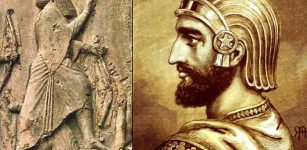 Murder Of Bardiya: Son Of Cyrus The Great And The Riddle Of The Impostor
Historical Figures | Dec 7, 2018
Murder Of Bardiya: Son Of Cyrus The Great And The Riddle Of The Impostor
Historical Figures | Dec 7, 2018 -
 Ancient Nandivardhan Was The City Of Vakataka Rulers Who Built Ajanta Caves
Archaeology | Jun 13, 2018
Ancient Nandivardhan Was The City Of Vakataka Rulers Who Built Ajanta Caves
Archaeology | Jun 13, 2018 -
 Scylla And Charybdis – Legendary Greek Sea Monsters – Choosing The Lesser Of Two Evils
Featured Stories | Jan 15, 2021
Scylla And Charybdis – Legendary Greek Sea Monsters – Choosing The Lesser Of Two Evils
Featured Stories | Jan 15, 2021 -
 Illuminated Ancient Manuscripts Reflect 1,000 Years Of Human History
Artifacts | Sep 12, 2015
Illuminated Ancient Manuscripts Reflect 1,000 Years Of Human History
Artifacts | Sep 12, 2015 -
 Scotland’s Mysterious Ballachulish Figure Could Be Cailleach Bheithir – Ancient Hag Goddess Of Winds And Storms
Artifacts | Nov 23, 2018
Scotland’s Mysterious Ballachulish Figure Could Be Cailleach Bheithir – Ancient Hag Goddess Of Winds And Storms
Artifacts | Nov 23, 2018 -
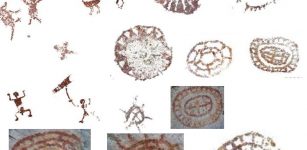 Large Collection Of At Least 2,500-Year-Old Cave Paintings Discovered In Indonesia
Archaeology | Dec 17, 2017
Large Collection Of At Least 2,500-Year-Old Cave Paintings Discovered In Indonesia
Archaeology | Dec 17, 2017 -
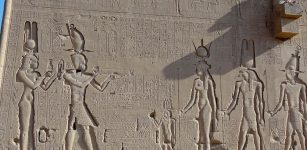 Why The Discovery Of Cleopatra’s Tomb Would Rewrite History
Featured Stories | Nov 16, 2022
Why The Discovery Of Cleopatra’s Tomb Would Rewrite History
Featured Stories | Nov 16, 2022 -
 Birds – Mysterious Avian Messengers That Symbolized Bridge Between Humans And Gods In World Beliefs
Featured Stories | Aug 21, 2021
Birds – Mysterious Avian Messengers That Symbolized Bridge Between Humans And Gods In World Beliefs
Featured Stories | Aug 21, 2021 -
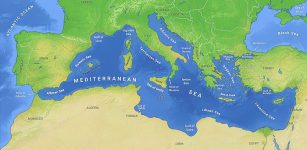 Mediterranean Migration Was Low Over 8,000 Years – New Study
Archaeology | Mar 3, 2021
Mediterranean Migration Was Low Over 8,000 Years – New Study
Archaeology | Mar 3, 2021 -
 Evidence Of Babylonian Destruction Of Jerusalem Found At The City of David
Archaeology | Aug 19, 2017
Evidence Of Babylonian Destruction Of Jerusalem Found At The City of David
Archaeology | Aug 19, 2017 -
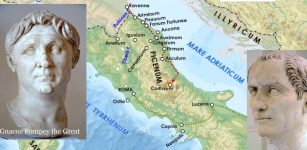 On This Day In History: Julius Caesar Defeated “Pompey The Great” At Pharsalus – On August 9, 48 BC
News | Aug 9, 2016
On This Day In History: Julius Caesar Defeated “Pompey The Great” At Pharsalus – On August 9, 48 BC
News | Aug 9, 2016 -
 Ancient Roman Settlement Discovered In Deal, UK
Archaeology | Dec 16, 2022
Ancient Roman Settlement Discovered In Deal, UK
Archaeology | Dec 16, 2022 -
 11,000-Year-Old Human Remains Found At Heaning Wood Bone Cave In Britain
Archaeology | Jan 25, 2023
11,000-Year-Old Human Remains Found At Heaning Wood Bone Cave In Britain
Archaeology | Jan 25, 2023 -
 Berserkers In Mesopotamia, Europe And India: Old Tradition Of Mad Fighting Dates Back At Least 3000 BC
Ancient Traditions And Customs | Jun 6, 2017
Berserkers In Mesopotamia, Europe And India: Old Tradition Of Mad Fighting Dates Back At Least 3000 BC
Ancient Traditions And Customs | Jun 6, 2017 -
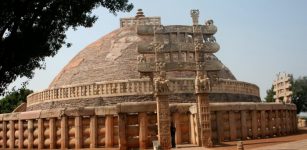 The Great Stupa At Sanchi – Oldest Stone Structure In India
Featured Stories | Dec 27, 2015
The Great Stupa At Sanchi – Oldest Stone Structure In India
Featured Stories | Dec 27, 2015 -
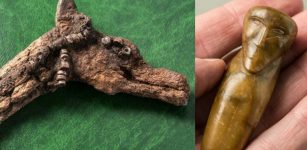 Ancient Doll And Mythical Animal – 4,500-Year-Old Toys Discovered In Siberia
Archaeology | Dec 30, 2017
Ancient Doll And Mythical Animal – 4,500-Year-Old Toys Discovered In Siberia
Archaeology | Dec 30, 2017 -
 Antediluvian Sacred Tablets And Rare Manuscript Reveal Secret Ancient Egyptian Knowledge
Featured Stories | Apr 13, 2018
Antediluvian Sacred Tablets And Rare Manuscript Reveal Secret Ancient Egyptian Knowledge
Featured Stories | Apr 13, 2018



